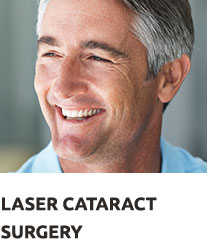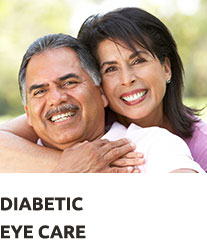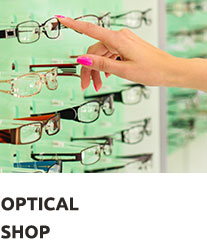Conditions We Treat
Chalazion
A chalazion is a small, non-infectious lump that develops in the upper or lower eyelid due to the blockage of the meibomian gland, an oil gland in the eyelid. The meibomian gland produces fluid that lubricates the eye. While children do develop chalazions, they more commonly affect adults between the ages of 30 to 50.
Treatment of Chalazion
Chalazion usually resolve on their own, over the course of time. It can take a few months before they disappear. To treat a chalazion, the following options are available:
- Warm compresses applied four times a day for 10 to 15 minutes each time
- Antibiotic ointment
- Steroid injection
- Surgical drainage
While older children and adults may undergo the surgical drainage procedure in a doctor’s office under local anesthesia, general anesthesia is usually recommended for a chalazion removal in young children. If a chalazion recurs in the same place, a tissue biopsy may be conducted in order to rule out a more serious issue.
Conjunctivitis
Conjunctivitis, commonly referred to as pink eye, is an infection or inflammation of the conjunctiva, the membrane that lines the eyelid and covers the white part of the eyeball. The inflammation affects the blood vessels in the eye and gives the eye a pink or red appearance. Pink eye can be caused by either a bacterial or viral infection, an allergic reaction, a foreign object in the eye or a blocked tear duct. Pink eye can be contagious, so proper diagnosis and prompt treatment are important.
Treatment of Conjunctivitis
Treatment for pink eye depends on the cause of the conjunctivitis. Bacterial conjunctivitis treatment often includes prescribed antibiotic eye drops or ointment. There is no treatment for viral conjunctivitis and the symptoms eventually ease over time as the virus clears. However, if the cause of the viral conjunctivitis is the herpes simplex virus, antiviral medication may be prescribed. If the cause of the conjunctivitis is allergies, it may be treated with antihistamines to control allergic reactions or decongestants, steroids and anti-inflammatory drops to treat inflammation.
Ectropion
Ectropion is an eye condition in which the eyelid turns outward. It typically affects the lower eyelid, exposing the inner lid in either one section of eye or across the entire lid. Ectropion prevents tears from draining from the eye correctly, resulting in irritation. It usually occurs in older adults as a result of the aging process, during which muscles, tendons and connective tissue around the eyes progressively weaken. Those who have had trauma to the face or eyes are at greater risk of developing ectropion.
Treatment of Ectropion
While there are temporary-relief treatments, such as artificial tears or soothing ointment, correction of ectropion is accomplished with a brief surgical procedure in which the eyelids are repositioned. For ectropion due to muscle weakness or scars from a previous surgery, the repair procedure may include the following:
- Stretching of scar tissue
- Removal of a small section of eyelid
- Skin graft to reposition the eyelid
A patient usually needs to wear an eye patch for 24 hours after surgery. During recovery, an antibiotic and steroid ointment must be administered. Though there may be some short-term bruising or swelling after the operation, the symptoms of ectropion usually resolve immediately.
Diabetic Retinopathy
Diabetic retinopathy is a complication of diabetes that affects the eyes. The length of time a person has diabetes determines his or her likelihood of developing diabetic retinopathy. It is the most common diabetic eye complication, and a leading cause of blindness in American adults. Diabetic retinopathy causes the blood vessels that supply nourishment to the retina, the light-sensitive lining in the back of the eye where vision is focused, to weaken, swell and leak, causing a loss of vision.
Treatment of Diabetic Retinopathy
Other than controlling blood pressure, blood cholesterol and blood sugar, treatment is not needed during the first three stages of diabetic retinopathy. The fourth stage, proliferative retinopathy, is treated with a laser surgery known as scatter laser treatment. During the procedure, the abnormal blood vessels are ablated, causing them to shrink. This procedure works best once the blood vessels begin to bleed. Severe blood-vessel bleeding may need to be surgically corrected with a vitrectomy, during which blood is removed from the eye.
Treatment for macular edema usually includes a laser procedure called focal laser treatment. During this procedure, several hundred small laser burns are made in the areas of retinal leakage to reduce the amount of fluid in the retina. This helps reduce the risk of vision loss, and may improve lost vision in a small number of cases. Focal laser treatment is performed in a doctor’s office, and can usually be completed in just one session.
Entropion
Entropion is an eye condition where the eyelid turns inward. Typically entropion occurs on the lower eyelid where the skin and lashes rub painfully against the cornea. This condition may cause the lid to either turn in constantly or only at times when the eyes are closed tightly.
Treatment of Entropion
While there are treatments for entropion, correction of the condition is completed with a brief surgical procedure in which the eyelids are repositioned. Temporary relief of the entropion condition can also be found with the following treatment methods:
- BOTOX Cosmetic
- Skin tape to hold the eyelid in place
- Strategically placed stitches
- Lubricating eye drops
Surgical Correction of Entropion
The eyelid area is numbed with a local anesthetic and a light sedation may also be provided. For entropion due to muscle weakness, the surgery may involve the removal of a small section of eyelid to tighten the muscles in the area. When the entropion is caused by scars or prior surgery, the procedure typically relies on a skin graft to allow a repositioning of the eyelid.
Patients usually need to wear an eye patch for 24 hours after the surgery. Post-operatively an antibiotic and steroid ointment will need to be applied. Symptoms of entropion usually resolve immediately. There may be some short-term bruising or swelling as a result of the procedure.
Corneal Abrasion
The cornea is the clear covering of the front of the eye which bends, or refracts, light rays as they enter the eye. Injuries, such as scratches or cuts, on the surface of the cornea are known as corneal abrasions. Due to the amount of nerve cells in the cornea, a corneal abrasion is usually painful. A corneal abrasion causes significant pain and discomfort; it is a serious condition that should be medically addressed as soon as possible.
Treatment of a Corneal Abrasion
Depending on the cause of the condition, a corneal abrasion may be treated with a combination of the following methods:
- Rinsing the eye
- Using artificial tears
- Over-the-counter medication
- Antibiotic eye drops
- Antibiotic ointment
- Patching of the affected eye
Pain medication or eye drops to reduce muscle spasms may be prescribed. It is important for patients with a corneal abrasion to avoid touching or rubbing their eyes. In most cases, a corneal abrasion can be effectively treated with no permanent complications and typically heals within a matter of days. Depending on the severity of the corneal abrasion, a corneal transplantation may be recommended.
While not all corneal abrasions can be avoided, the risk of occurrence may be reduced by using protective eye wear when engaging in activities that may cause foreign matter to blow into the eye.









